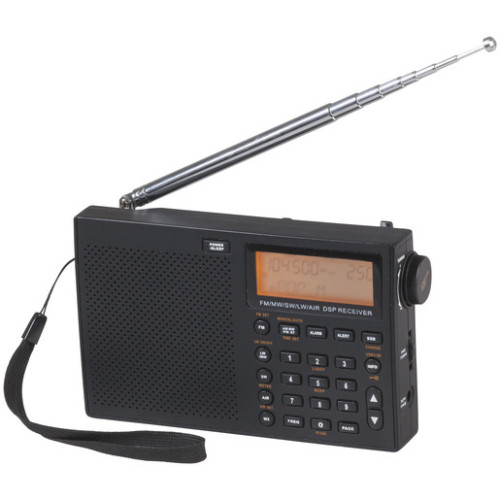Digitech Compact World Band Radio with SSB
- Product Code: AR1780
- Availability: Out Of Stock
-
$149.00
This is a very compact world band radio, covering the most popular frequencies. It features rapid digital tuning, 1000 memory presets, and an easy to read display. Single Sideband Modulation (SSB) is used to listen in on 27MHz CB radio, short wave amateur radio and morse code. The large internal speaker provides clear audio, and you can connect your favourite set of headphones for personal listening. Powerful enough to receive what you want, and compact enough to take wherever you want. Features: - FM/MW/SW/LW/AIR Bands - Single Side Band (SSB) - Telescopic Antenna - 3.5mm socket for external antenna - Selectable Bandwidth: 1 - 6kHz - Radio Bands:   FM 87.5 - 108MHz   MW 522 - 1620kHz / 520 - 1710 kHz   SW 1711 - 29,999kHz   LW 150 - 450kHz   AIR 118 - 137kHz HandyTip What is World Band?World Band Radios are those radios that are capable of tuning into radio programs generated by, say the British BBC, Radio Australia(Australian ABC Radio programs), Voice of America, Radio Vatican, etc. These programs are transmitted on a regular weekly basis in any one 24 hour period. It is generally preferable to use 24 hour time, linked to GMT (Greenwich Mean Time) which is the time it is in London (UK) so that confusion is eliminated as when the program is broadcast. There are dozens and dozens of programs from countries all over the world in the special languages of these countries. For example if you are an Australian citizen but originally from Greece, you can tune into stations that enable you to keep your knowledge of the language up to date. The stations typically have a lot of local news which you would normally not hear. The World Band stations are generally broadcast in several frequencies at the same time, typically between about 1.8MHz & 29.00 MHz, especially between7 & 21MHz. You can look up the broadcasting details on Google etc. Phase-Locked Loop (PLL) is a circuit configuration invented over 80 years ago. Originally the circuit was so complex that it only appeared in expensive radios. With modern microchip technology, the PLL got a lot cheaper. The benefits of PLL technology enabled receivers to remain on a station frequency with great accuracy. The radio circuit did not ‘drift.’ PLL technology, though still not cheap, is a hallmark of quality short wave radios and that’s why Jaycar specifies them.

